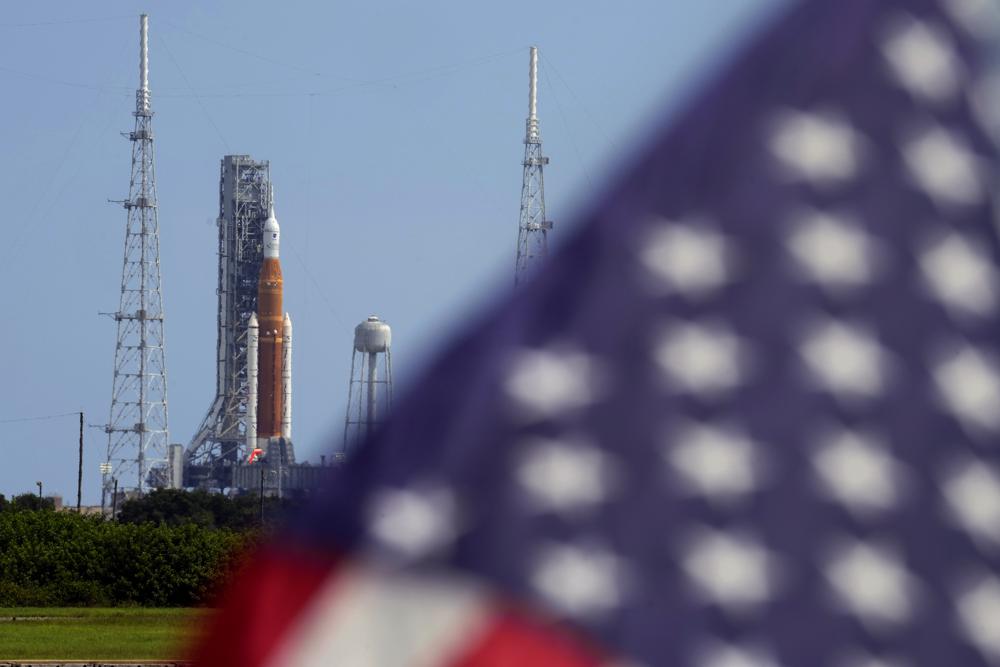NASA’s new moon rocket sprang another dangerous fuel leak Saturday, forcing launch controllers to call off their second attempt to send a crew capsule into lunar orbit with test dummies.
The first attempt earlier in the week was also marred by escaping hydrogen, but those leaks were elsewhere on the 322-foot (98-meter) rocket, the most powerful ever built by NASA.
NASA Administrator Bill Nelson said repair work could bump the launch into October.
Mission managers planned to meet later in the day to decide on a course of action. After Tuesday, a two-week launch blackout period kicks in. Extensive leak inspections and repairs, meanwhile, could require that the rocket be hauled off the pad and back into the hangar; that would push the flight into October, Nelson said.
“We’ll go when it’s ready. We don’t go until then and especially now on a test flight, because we’re going to stress this and test it … and make sure it’s right before we put four humans up on the top of it,” Nelson said.
He added: “This is part of our space program: Be ready for the scrubs.”
NASA wants to send the crew capsule atop the rocket around the moon, pushing it to the limit before astronauts get on the next flight. If the five-week demo with test dummies succeeds, astronauts could fly around the moon in 2024 and land on it in 2025. People last walked on the moon 50 years ago.
Launch director Charlie Blackwell-Thompson and her team had barely started loading nearly 1 million gallons of fuel into the Space Launch System rocket at daybreak when the leak cropped up in the engine section at the bottom.
Ground controllers tried to plug it the way they handled previous leaks: stopping and restarting the flow of super-cold liquid hydrogen in hopes of closing the gap around a seal in the supply line. They tried that twice, in fact, and also flushed helium through the line. But the leak persisted.
Blackwell-Thompson finally halted the countdown after three to four hours of futile effort.
During Monday’s launch attempt, hydrogen fuel escaped from elsewhere in the rocket. Technicians tightened up the fittings over the past week, but Blackwell-Thompson cautioned that she wouldn’t know whether everything was tight until Saturday’s fueling.
Hydrogen molecules are exceedingly small — the smallest in existence — and even the tiniest gap or crevice can provide a way out. NASA’s space shuttles, now retired, were plagued by hydrogen leaks. The new moon rocket uses the same type of main engines.
Even more of a problem Monday, a sensor indicated one of the rocket’s four engines was too warm, but engineers later verified it actually was cold enough. The launch team planned to ignore the faulty sensor this time around and rely on other instruments to ensure each main engine was properly chilled. But the countdown never got that far.
Mission managers accepted the additional risk posed by the engine issue as well as a separate problem: cracks in the rocket’s insulating foam. But they acknowledged other trouble — like fuel leaks — could prompt yet another delay.
That didn’t stop thousands from jamming the coast to see the Space Launch System rocket soar. Local authorities expected massive crowds because of the long Labor Day holiday weekend.
The $4.1 billion test flight is the first step in NASA’s Artemis program of renewed lunar exploration, named after the twin sister of Apollo in Greek mythology.
Twelve astronauts walked on the moon during NASA’s Apollo program, the last time in 1972.
Artemis — years behind schedule and billions over budget — aims to establish a sustained human presence on the moon, with crews eventually spending weeks at a time there. It’s considered a training ground for Mars.
(AP)











